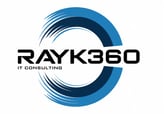The Future of Enterprise: AI-Infused VR Transforming Business Operations
AI and VR are reshaping the business landscape, driving innovation, collaboration, and efficiency across industries. From virtual workspaces to AI-powered training and immersive customer experiences, enterprises leveraging these technologies are gaining a competitive edge. Explore how AI-infused VR is revolutionizing the future of business.
Ray
1/25/20252 min read


The Future of Enterprise: AI-Infused VR Transforming Business Operations
The business world is evolving rapidly, and companies that embrace emerging technologies are gaining a competitive edge. Artificial intelligence (AI) and virtual reality (VR) are no longer futuristic concepts—they are powerful tools revolutionizing how enterprises operate, collaborate, and innovate. AI-infused VR is poised to reshape industries, offering unprecedented efficiency, engagement, and scalability.
How AI and VR are Driving Business Transformation
AI-driven insights combined with immersive VR environments create new possibilities for businesses across multiple sectors. Here’s how AI-infused VR is transforming enterprise operations:
1. Enhanced Remote Collaboration and Virtual Workspaces
With hybrid and remote work becoming the norm, AI-powered VR enables businesses to:
Create immersive virtual offices, where teams can interact in lifelike 3D spaces.
Improve collaboration by analyzing employee interactions and suggesting optimal communication strategies.
Facilitate global teamwork, eliminating geographical barriers and fostering real-time collaboration.
2. AI-Powered Training and Development
Companies can leverage AI-infused VR to provide:
Realistic, hands-on training simulations, reducing the need for costly in-person programs.
Personalized learning experiences, adjusting training modules based on employee performance.
Soft skills training, allowing employees to practice leadership, negotiation, and conflict resolution in realistic scenarios.
3. Immersive Customer Experiences and Marketing
Businesses are using AI-driven VR to engage customers in new and exciting ways:
Virtual showrooms and product demos, allowing customers to explore offerings before purchasing.
AI-driven personalization, adapting VR experiences to user preferences.
Immersive storytelling, where brands can connect with audiences through interactive narratives.
4. AI-Infused VR in Product Design and Prototyping
AI-powered VR streamlines the design and innovation process by:
Enabling virtual prototyping, reducing costs and speeding up development cycles.
Enhancing creativity, allowing designers to interact with and modify 3D models in real time.
Predicting market trends, using AI to analyze consumer behavior and optimize product designs.
5. Revolutionizing Data Analysis and Decision-Making
AI and VR are enhancing business intelligence by:
Visualizing complex data in interactive 3D models, making insights easier to comprehend.
Simulating business scenarios, helping executives make informed strategic decisions.
Automating data-driven predictions, allowing businesses to anticipate market changes and optimize operations.
Challenges and Considerations
While AI-infused VR offers immense potential, businesses must navigate challenges such as:
High initial investment, though costs are expected to decrease as technology matures.
Cybersecurity risks, requiring robust protections against data breaches in virtual environments.
Adoption barriers, including the need for employee training and cultural shifts in workplace dynamics.
Conclusion
AI-powered VR is no longer a futuristic vision—it’s a reality transforming how enterprises operate, innovate, and engage customers. As adoption grows, businesses that harness this technology will unlock new efficiencies, collaboration opportunities, and competitive advantages. The future of enterprise is immersive, intelligent, and limitless.


